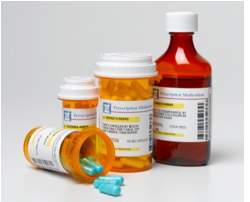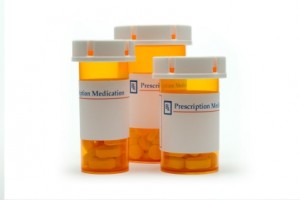 With prescription painkiller addictions and overdoses on the rise among veterans, is the U.S. Department of Veterans Affairs over-prescribing veterans painkillers? According to the Center for Investigative Reporting (CIR), the number of opiates (such as hydrocodone, oxycodone, methadone and morphine) prescribed to veterans has risen by 270 percent in the past twelve years. This has left many worried that VA practices of prescribing veterans painkillers is not only ineffective but dangerous. Read more →
With prescription painkiller addictions and overdoses on the rise among veterans, is the U.S. Department of Veterans Affairs over-prescribing veterans painkillers? According to the Center for Investigative Reporting (CIR), the number of opiates (such as hydrocodone, oxycodone, methadone and morphine) prescribed to veterans has risen by 270 percent in the past twelve years. This has left many worried that VA practices of prescribing veterans painkillers is not only ineffective but dangerous. Read more →
 Drugstore chain CVS has joined the fight against prescription drug abuse. As reported by NBC News, CVS has announced that it has and will revoke dispensing privileges for physicians and other healthcare providers who write too many prescriptions for painkillers (including, hydrocodone, oxycodone, alprazolam, methadone and carisoprodol). So far, they have revoked the privilege of 26 physicians and healthcare providers.
Drugstore chain CVS has joined the fight against prescription drug abuse. As reported by NBC News, CVS has announced that it has and will revoke dispensing privileges for physicians and other healthcare providers who write too many prescriptions for painkillers (including, hydrocodone, oxycodone, alprazolam, methadone and carisoprodol). So far, they have revoked the privilege of 26 physicians and healthcare providers.
In an attempt to crack down on prescription drug abuse, and in lieu of the Drug Enforcement Administration revoking the license of two CVS pharmacies in Florida after they were accused of dispensing excessive amounts of oxycodone in 2012, CVS began monitoring who was prescribing how much of certain painkillers. Read more →
There is a new super painkiller called Zohydro ER that is waiting approval from the Food and Drug Administration (FDA). The new drug is causing a stir of controversy because of its strength and potential for misuse. Because of this, the new drug is being compared to other opiate painkillers such as Vicodin and OxyContin that have had devastating effects in regards to substance dependence.
Zohydro ER is an extended release (12 hour) form of the opiate drug called hydrocodone. Unlike other opiate painkillers on the market like Vicodin that are a mix of hydrocodone and acetaminophen, Zohydro ER contains 100 percent hydrocodone. Mixed opiate painkillers like Vicodin are extremely addictive, but a pure hydrocodone painkiller like Zohydro ER has an even greater potential for dependence.
Another painkiller, OxyContin, which is made from the opiate oxycodone, is the most abused prescription drug in the U.S. (Vicodin is second and Zohydro ER contains 10 times more hydrocodone than Vicodin). OxyContin was also a time-release drug in which crushing the pill avoided this function. This resulted in a major abuse problem and gave OxyContin (which is no longer available in its original form because of the rampant abuse) the label “hillbilly heroin.”
A major concern with Zohydro ER is its time-release strength, which is 12 hours (as opposed to Vicodin which is only 2-4 hours). As with OxyContin, abusers could potentially have access to the full strength of the pill by crushing it then eating or snorting it and receiving a large and dangerous dose of the opiate drug. Approval for this drug (the manufacturer, Zogenix, stands to make millions from it) comes at a time when prescription drug abuse and overdoses are reaching epidemic proportions in this country.
 At a time when drug and alcohol abuse among teens is stabilizing, prescription drug abuse continues to escalate (up 33 percent from 2008). When we think of drug use among teens, we think of parents as the combative force against it. But recent studies are showing us that might not be the case. In fact, parents might be contributing to the problem of prescription drug abuse.
At a time when drug and alcohol abuse among teens is stabilizing, prescription drug abuse continues to escalate (up 33 percent from 2008). When we think of drug use among teens, we think of parents as the combative force against it. But recent studies are showing us that might not be the case. In fact, parents might be contributing to the problem of prescription drug abuse.
A recent study by The Partnership at Drugfree.org found that many parents, often because of lack of awareness, misinformation or denial, are taking a more hands-off approach when it comes to prescription drugs. And even though many parents are finding time to talk to their kids about alcohol or street drugs, far less are talking to them about the dangers of prescription drugs. The scary truth is that researchers found 1 in 4 teens had misused prescription drugs. So why when we are facing a prescription drug abuse epidemic in this country are parents drawing a line between prescription drugs and illicit drugs? Read more →
 Is mixing Tylenol and alcohol safe? The simply answer is No. The primary ingredient in Tylenol is acetaminophen. This ingredient is also found in other common over-the-counter medicines as well as prescription pain and cough medicines. As the FDA has reported, acetaminophen is harsh on the body even without the help of alcohol. So when combining with alcohol, even if not taken simultaneously, it can be quite dangerous, sometimes even deadly.
Is mixing Tylenol and alcohol safe? The simply answer is No. The primary ingredient in Tylenol is acetaminophen. This ingredient is also found in other common over-the-counter medicines as well as prescription pain and cough medicines. As the FDA has reported, acetaminophen is harsh on the body even without the help of alcohol. So when combining with alcohol, even if not taken simultaneously, it can be quite dangerous, sometimes even deadly.
Why is this the case? After one drinks alcoholic beverages, a certain enzyme develops. When acetaminophen combines with this enzyme, a toxic byproduct is produced that causes liver cell death. This is especially true if one is taking Tylenol to cure a hangover the day after a night of drinking. Mixing Tylenol and alcohol puts one at risk for liver failure. Read more →
When talking about drugs like Adderall, it’s not uncommon to hear: “a doctor wouldn’t prescribe something that was bad for me,” or “I’m not buying it on the street corner.” This why prescription drugs like Adderall are so dangerous. People assume that because a doctor prescribes it, or because it is beneficial to some, that it poses no risks to others. This is far from the truth.
 It is true that drugs like Adderall have drastically improved the lives of children and others correctly diagnosed with disorders like A.D.H.D. However, because of the extreme focus and alertness it provides, it has also become a popular drug among teenagers and young adults who use it as a study aid, party drug, and weight-loss drug. What many aren’t aware of is that drugs like Adderall are highly addictive and can have serious psychological side effects for those who don’t need them. This is alarming when The New York Times recently reported that almost 14 million monthly prescriptions for A.D.H.D were written for Americans ages 20 to 39 in 2011 (up from 5.6 million in 2007). Read more →
It is true that drugs like Adderall have drastically improved the lives of children and others correctly diagnosed with disorders like A.D.H.D. However, because of the extreme focus and alertness it provides, it has also become a popular drug among teenagers and young adults who use it as a study aid, party drug, and weight-loss drug. What many aren’t aware of is that drugs like Adderall are highly addictive and can have serious psychological side effects for those who don’t need them. This is alarming when The New York Times recently reported that almost 14 million monthly prescriptions for A.D.H.D were written for Americans ages 20 to 39 in 2011 (up from 5.6 million in 2007). Read more →


